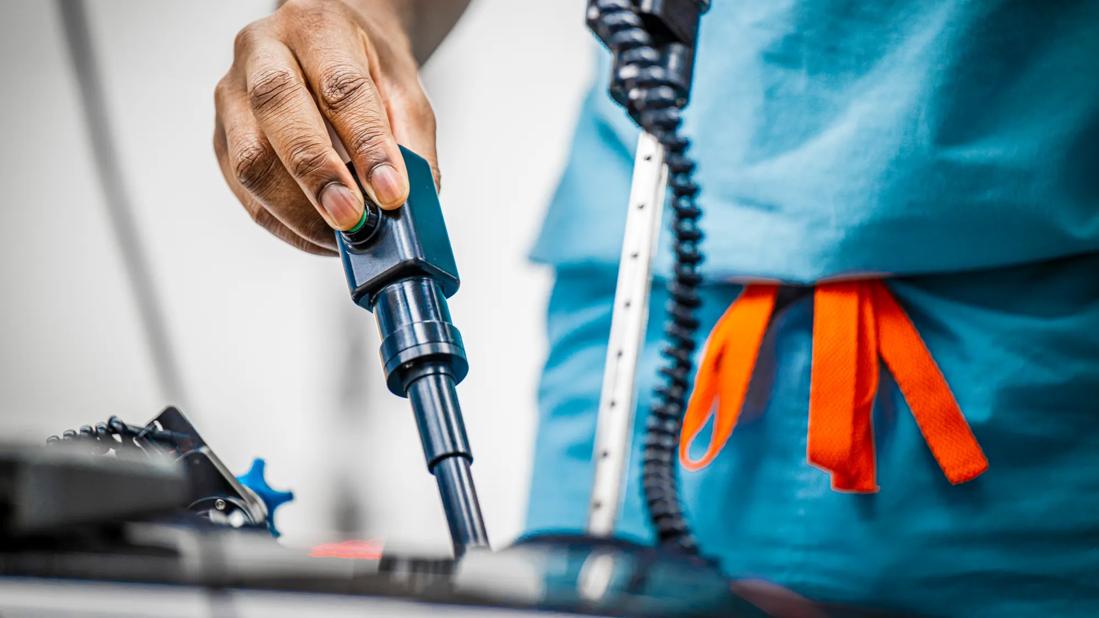New study sheds light on national trends in urology residency, former CCLCM alum comments

Urology has been long revered as one of the most competitive specialties for medical school graduates pursuing residency training.
Advertisement
Cleveland Clinic is a non-profit academic medical center. Advertising on our site helps support our mission. We do not endorse non-Cleveland Clinic products or services. Policy
A record number of applicants submitted rank lists to the American Urological Association (AUA) Residency Match in 2022, according to a new report published in The Journal of Urology. The match rate of 65.6% was the lowest in nearly a decade, owing to increased interest in the specialty.
Steven Campbell, MD, PhD, a urologic oncologist at Cleveland Clinic, has been residency program director for almost 17 years—one of only two program directors the department has had since the late 1980s. He’s not surprised by the enduring interest in the specialty among applicants and trainees. He’s witnessed its popularity throughout his career and worked with hundreds of aspiring urology specialists and subspecialists.
“It encompasses diverse pathologies of the urologic system—from benign conditions affecting patients’ quality of life to more complex malignancies that are life-threatening. In addition, the specialty combines medical and surgical approaches, including significant exposure to robotic surgery, a compelling draw for many young surgeons,” he says.
With U.S. Medical Licensing Examination (USMLE) scores now a pass/fail measure rather than a numeric score, authors of a new study published in the Journal of Urology say it’s increasingly important to understand characteristics associated with medical schools that are producing a high volume of urology residents. The research team, not affiliated with Cleveland Clinic, set out to determine which U.S. medical schools were associated with the most successful match candidates.
Advertisement
The researchers collected publicly available data on 1,814 urology residents who attended a U.S.-based Accreditation Council for Graduate Medical Education (ACGME) Accredited program from 2016 to 2021. Using this data, they generated a list of U.S. feeder medical schools for the specialty to understand better the possible indicators of schools producing a high volume of urology residents.
In their analysis of 177 medical schools, Cleveland Clinic Lerner College of Medicine (CCLCM) topped the list with the highest percentage of graduates entering urology (N = 7, 3.67%). The State University of New York Downstate Medical Center College of Medicine produced the highest absolute number (N = 41, 3.30%). The authors concluded that a home urology program was the most significant factor in predicting the output of urology residents.
Additionally, they found the presence of a home urology program, National Institutes of Health funding and departmental rather than division status as the only significant indicators that impacted a student’s pre-residency h-index.
They acknowledge the limitations of their study, however, as many important factors associated with match are incomputable through the study’s design, including personality fit, the influence of mentors, and away rotations at different institutions, as examples.
For Cleveland Clinic’s part, Dr. Campbell says, “We are looking for someone who will be a hardworking and reliable colleague, who is inquisitive and dedicated to learning, and who would like to contribute to progress in the field.” He adds, “We also want someone with character who will be able to remain resilient to meet the challenges that medicine and urology will face in the coming years.”
Advertisement
Bryan D. Naelitz, MD, MS, a second-year resident in the Department of Urology and a CCLCM graduate, says exposure to urology faculty, their clinical practices and research programs while in medical school was important when choosing—and then matching into—his specialty.
CCLCM, a five-year program, emphasizes an integrated basic and clinical research curriculum. In his first and second years, Dr. Naelitz studied transplant immunology at the Lerner Research Institute and clinical research within the Department of Urology, respectively.
This was foundational work for later in his medical school career when he investigated DHEA metabolism in the lab of Nima Sharifi, MD, and completed a master’s degree in clinical investigation and thesis under the mentorship of Sarah Vij, MD, with whom he published data in the Journal of Urology. Their study identified prolactin-to-testosterone ratio as the best predictor of finding a pituitary abnormality in men with hypogonadism. During this time, he also joined Dr. Campbell for a half day of clinic once a week.
“The curriculum is designed to explore your own academic pursuits alongside an immersive clinical experience. Once I decided I wanted to train in urology, CCLCM facilitated access and resources to faculty who were—and continue to be—eager to mentor and train,” he says.
Dr. Naelitz’s involvement with Cleveland Clinic began early. At 16, he participated in the Science Internship Program, an initiative coordinated through the Office of Civic Education Initiatives. He credits this experience for piquing his interest in surgery.
Advertisement
Ultimately, he shares the following advice for candidates: “Set yourself up for success by finding excellent mentorship, by identifying professionals who will channel your excitement about urology and enable you to grow. Engage in research projects that excite you and expand your investigative skillset. Find clinical mentors who will expose you to the field and give you the opportunity to understand how urologic care impacts patients’ quality of life.”
“Importantly,” he concludes, “be someone with interests outside of medicine; pursue hobbies and develop talents that make you unique and interesting.”
Advertisement
Advertisement

Check out our latest data in these core cardiovascular areas

How nurses are using frontline research to improve patient outcomes and healthcare delivery

The low anterior access approach using the single-port robot is gaining attention within the field

Launch of the tool promises to reshape quality assessment across the specialty

Overestimation of pain can escalate treatment, but underestimation can have other unintended consequences

Study explores role of single-dose drug in fostering the mother-infant dyad

Study highlights the benefits of clear, concise messaging

Revolutionizing pediatric urology with a new, less invasive approach